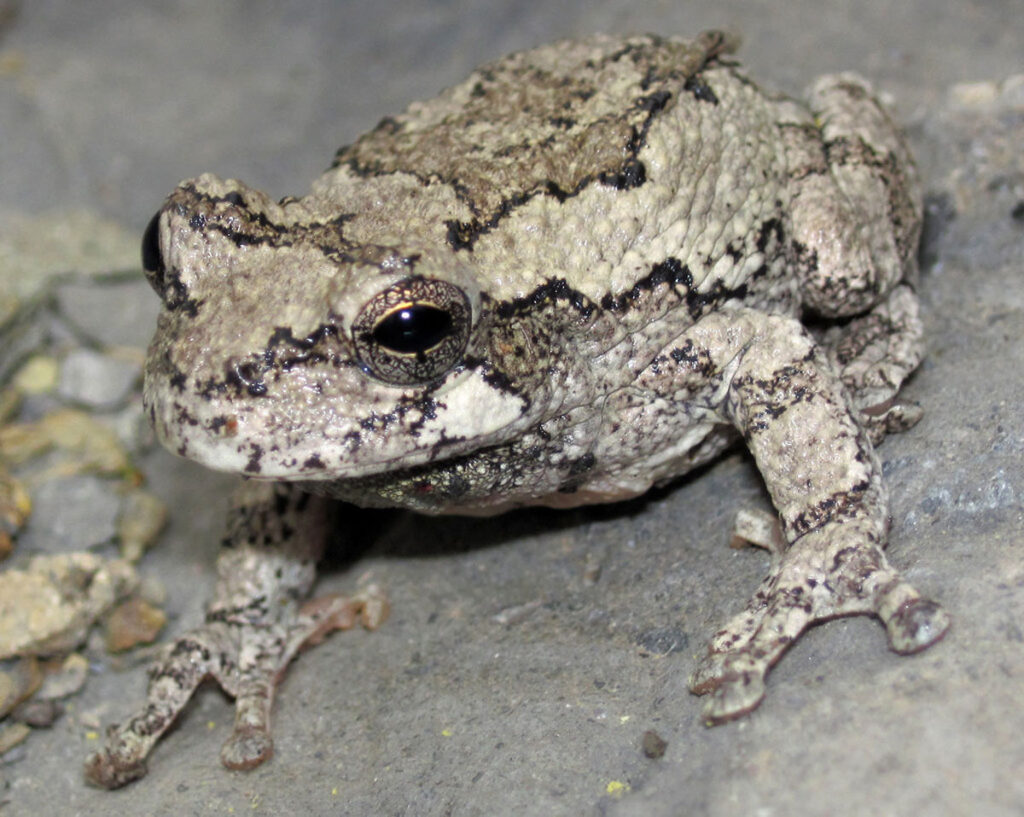Featured Image Credit: “Gray Treefrog (Hyla versicolor)” by Doug_McGrady is marked with CC BY 2.0.
The Gray Treefrog (H. versicolor) has a very close cousin in Virginia named Cope’s Gray Treefrog (H. chrysoscelis), and they look almost identical. Lucky for me, I haven’t seen either of them in person, I’ve only heard them calling, and that is the best way to tell them apart. You can compare their calls over at the Virginia Herpetological website. And I also encourage you to play the call of the Barking Treefrog, because when I did, my jaw dropped to the floor, and I sat there stunned and listened for a few minutes. It was just… amazing, and soft, and cute, and a little sad, and just UGH heartbreaking!
Back to the Gray Treefrog, however, which is also a frog call that I just love. I hear it near my garden, and whenever they call, they make me smile. Perhaps they are hanging up there in the trees, watching me dig in the dirt, getting all sweaty and grimy, and they’re like “heeEeeeEeeey! We are going to caress your ears! Are you ready?” It is April right now, and I just heard the first Gray Treefrog yesterday (reminding me I need to add them to the website!). Typically the males start calling April – May. The males call both to establish their breeding territory and to attract a mate.
Cool facts: These frogs can change their color in response to its environment and activities. In the photos I’ve seen, I would say their coloring typically resembles the light blue/green lichen I see on the trees around here. Also, these frogs typically live for seven to nine years!!
Size: 1.25-1 inches long Family: Hylidae Habitat: They live primarily in forests and forest edges and other wooded habitats where there are nearby ponds, streams, marshes, swamps, or ephemeral/semi-permanent wetlands, including agricultural lands and backyards. Identification: "can range from green to gray or brown. The upper surface of the body has a blotchy pattern that resembles lichen. Although the pattern varies, it usually features two dark central patches, which can be green, buff or gray. These frogs have a white spot beneath each eye and a dark stripe from the rear of the eyes to the front of the legs. The snout is short, and the skin is warty and coarse. They have webbed hands and feet and highly adapted toe tips for tree climbing." (From Smithsonian's National Zoo and Conservation Biology Institute website)









